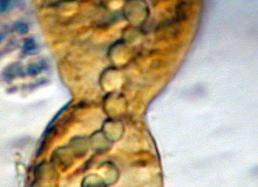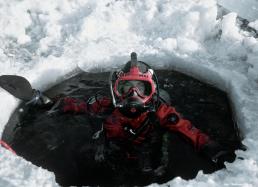Stromatolites & Microbes
Antarctica may seem cold and barren, but it has three important ingredients needed for life: light, water, and rocks (a source of carbon). With these three ingredients, specialized microbes called cyanobacteria can make their own food through photosynthesis and thrive in extreme environments where few other organisms can survive.
Millions of cyanobacteria flourish wherever there is even the smallest amount of light and liquid water, both in Antarctica’s frigid freshwater lakes, and in its melting ice. Understanding how these tiny, one-celled organisms function and form colonies in such hostile conditions provides insights into our global ecology both today and in the past.
Lake Life
Lake Untersee is one of the largest and deepest freshwater lakes in eastern Antarctica. As such, the lake possesses a variety of micro niches—along the lake floor, in the water column itself, and within its perennial ice cover—where different species of cyanobacteria and other microbes have evolved.
During the 2012 expedition, Dr. Andersen and his team of American and Russian scientists plan to map Lake Untersee’s many microbial communities and take samples of their DNA. Learning more about the unique chemistry and biological mechanisms of each species will help scientists understand the structure and function of Lake Untersee's ecosystem.
Photosynthesis and Stromatolites
Certain species of cyanobacteria form huge mats along the ocean floor that grow into stromatolites over time. By studying how these modern mats function, the team hopes to learn about how they contribute to the global ecology today—and how they may have evolved in Earth’s ancient oceans.
For example, during his 2009 expedition, Dr. Andersen and his colleagues discovered a species of Phormidium that builds up into giant conical structures closely resembling the oldest fossils from 3.5 billion years ago. Understanding how these microbes live can help shed light on the formation of ancient stromatolite communities.




